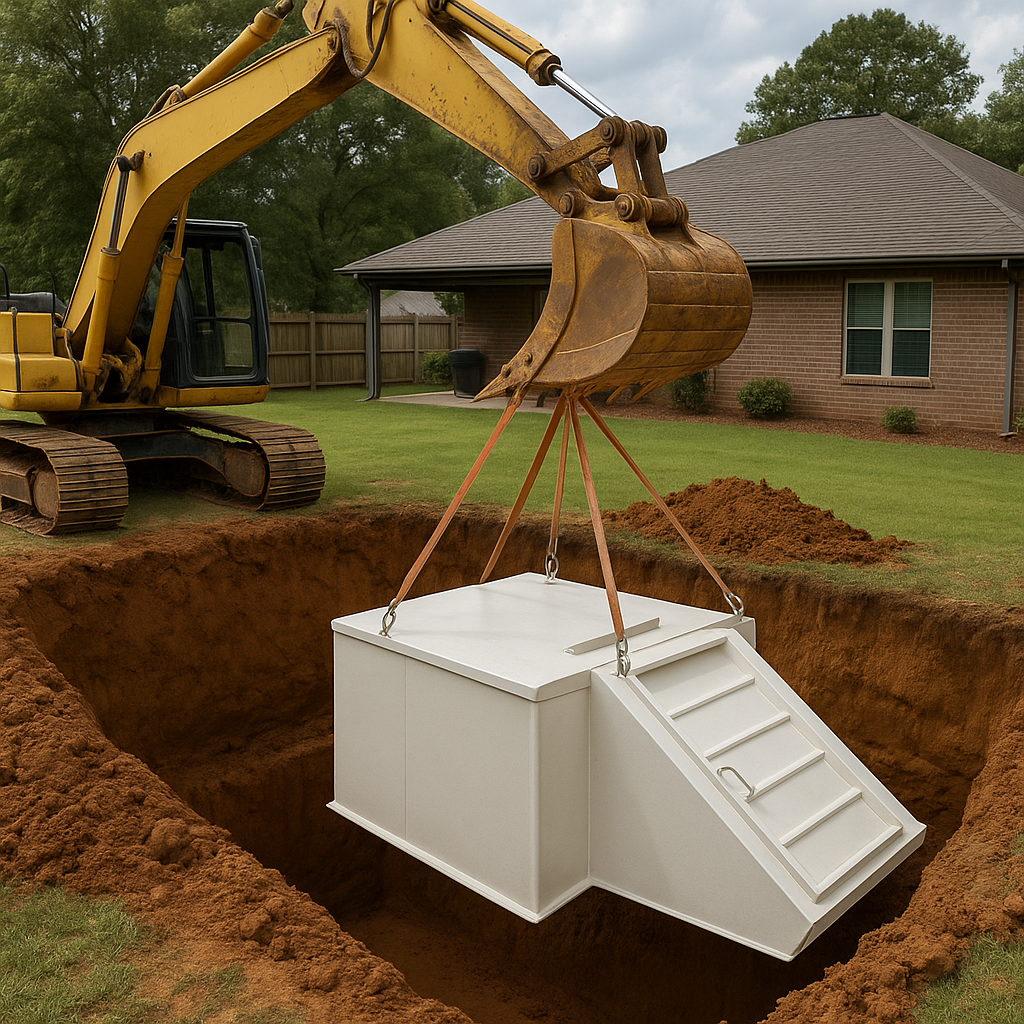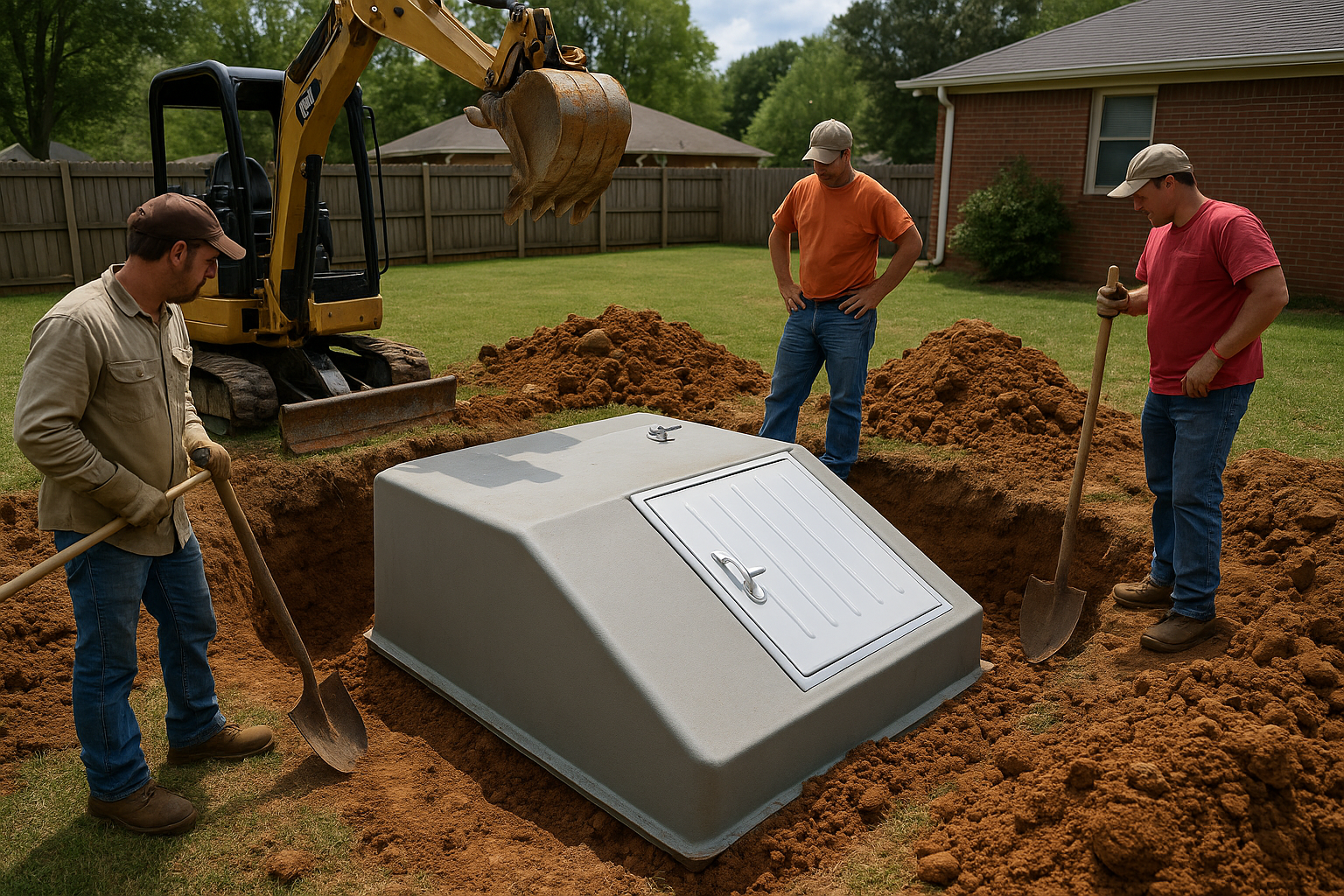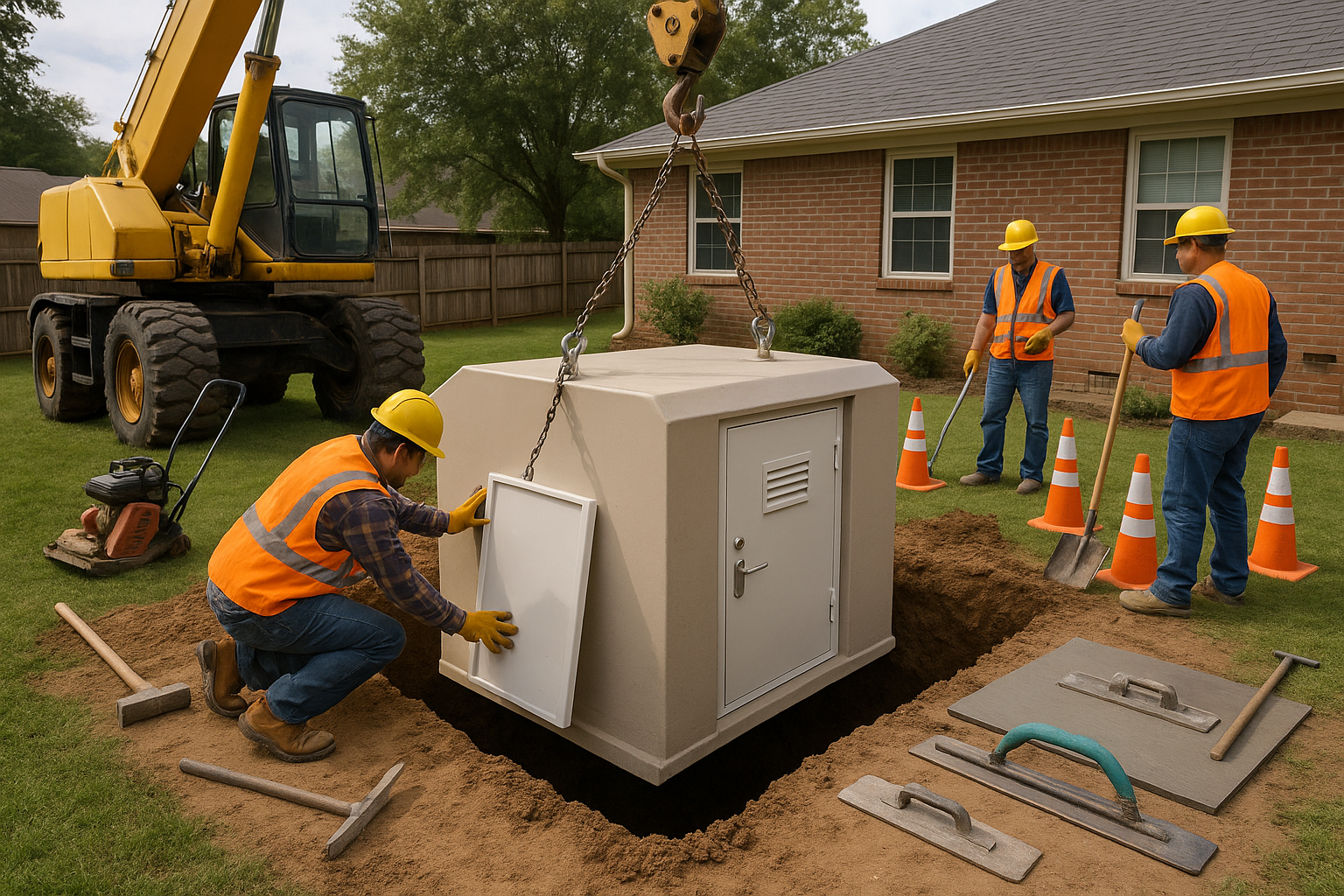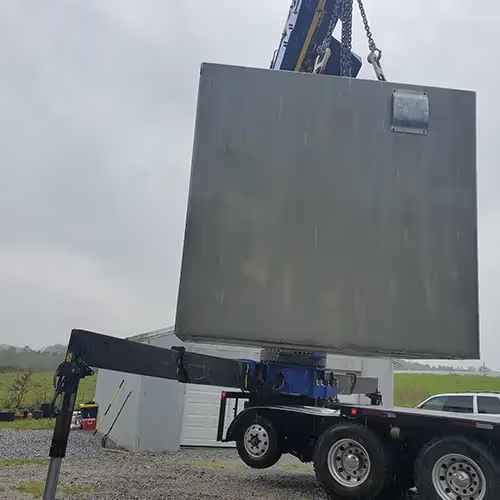Concrete Storm Shelters in Alabama: Specs, Reinforcement, and Maintenance

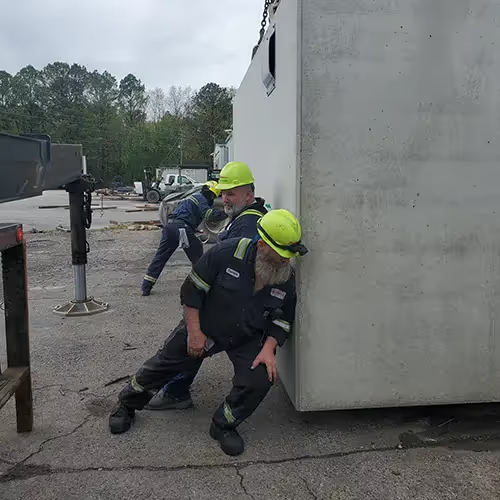
Have you ever wondered what makes concrete storm shelters in Alabama truly safe and long-lasting? With tornadoes, hurricanes, and severe storms posing a real threat, understanding Alabama tornado bunkers, storm shelter concrete thickness, reinforced safe rooms, and underground hurricane shelters is critical. Many homeowners invest in residential tornado basements without fully grasping the technical specifications, reinforcement requirements, or maintenance practices, which can directly affect safety, structural integrity, and long-term durability.
This post aims to give clarity. We’ll break down key specifications, concrete storm bunker installation, shelter foundation requirements, and essential emergency storm refuge practices, helping homeowners make informed decisions about investing in a secure shelter. Think of it as your comprehensive guide for ensuring your shelter is not only built but built to last decades.
Understanding these details is crucial because your family’s safety depends on it. Proper reinforcement, adherence to local building codes, and scheduled maintenance can be the difference between a shelter that withstands severe storms and one that fails under pressure. Key considerations include FEMA approved storm shelters, heavy duty storm protection, and accurate reinforcement bar layout for superior concrete wall durability.
By the end of this guide, you’ll understand shelter roof engineering, storm shelter waterproofing, and how to hire experienced Alabama storm shelter contractors. Additionally, practical bunker maintenance tips, reinforced concrete slabs, tornado shelter cost estimates, and concrete shelter ventilation will help keep your shelter safe and functional for years to come.
Understanding Concrete Storm Shelters: History, Terms, and Trends
Concrete storm shelters have been essential for severe weather safety for decades. Initially developed in tornado-prone regions, these structures evolved from basic underground bunkers to fully engineered, code-compliant shelters designed to withstand extreme wind and debris impact. Homeowners today also explore safe room anchoring methods, shelter interior design options, and rely on insights from residential storm bunker reviews to make informed choices.
Key terms help homeowners understand shelter functionality. Reinforcement refers to steel bars or mesh embedded in concrete to increase strength and prevent cracking. Load-bearing walls manage the structure’s weight and resist high wind forces, while basement storm reinforcement ensures subterranean safety. Underground refuge planning involves layout, ventilation, and emergency access considerations to maximize protection.
Modern shelters are increasingly designed with concrete mix strength, shelter construction guidelines, and wind load shelter design in mind to ensure durability. Contractors also offer storm protection retrofitting and secure storm exit points to meet evolving safety requirements. Prefabricated, modular, and smart monitoring features are becoming standard for homeowners seeking practical solutions that combine convenience with reliable protection.
Awareness of these terms and trends empowers homeowners to confidently plan their shelters. Understanding historical evolution, structural terminology, and current innovations ensures your concrete storm shelter not only meets codes but provides long-term safety and peace of mind. Knowledge of proper materials, design, and reinforcement methods reduces risk and supports Alabama emergency preparedness strategies for families and communities alike.
Key Specifications and Reinforcement Methods
The specifications and reinforcement techniques define whether a concrete storm shelter is a basic bunker or a truly safe, code-compliant structure. Homeowners should carefully evaluate walls, roofs, and foundations to ensure proper protection. Key components include:
- Concrete Strength (PSI Rating) – Determines load-bearing capacity and resistance to high winds. Higher PSI equals stronger, more durable walls.
- Steel Reinforcement (Rebar) – Reinforces the structure, prevents cracking, and improves resistance against debris.
- Wall and Roof Thickness – Adequate storm shelter concrete thickness is critical. Typical residential walls range 6–8 inches, roofs 8–10 inches.
- Load-Bearing Design – Ensures the shelter can handle soil, wind, and debris pressures.
- FEMA Compliance – Adhering to FEMA approved storm shelters standards guarantees EF-5 tornado protection.
Combining reinforced underground rooms with precast concrete bunkers maximizes strength and reliability. Proper reinforcement bar layout, correct concrete mixes, and attention to shelter roof engineering ensure the structure resists cracks and maintains concrete wall durability over time. Periodic inspections guided by a storm shelter inspection checklist are essential for maintaining protection.
Real-life examples show that shelters with proper basement storm reinforcement and concrete shelter ventilation effectively withstand severe tornadoes. Similarly, storm shelter waterproofing, well-planned underground refuge planning, and safe room anchoring methods protect both occupants and the structural integrity of the shelter. By adhering to these specifications, homeowners create safe, durable shelters capable of providing reliable protection during extreme weather events.
Benefits of Concrete Storm Shelters
Investing in a concrete storm shelter delivers far more than a safe space—it provides long-term durability, peace of mind, and a reliable solution for families. Benefits include:
- Superior Protection Against Severe Weather – Thick concrete walls, reinforced concrete slabs, and robust rebar placement resist tornado-force winds and debris.
- Longevity and Durability – Concrete shelters last decades with minimal maintenance, avoiding issues like rot or corrosion that affect wood or metal alternatives.
- FEMA and Code Compliance – FEMA approved storm shelters meet strict standards, providing maximum confidence during storms.
- Low Maintenance Requirements – Following bunker maintenance tips ensures long-term performance with periodic inspections.
- Increased Property Value – Professionally designed shelters with shelter interior design enhancements enhance property appeal.
Case studies indicate that residential tornado basements constructed with proper reinforcement bar layouts survived severe EF-4 tornadoes while neighboring homes were damaged. Additionally, features like shelter door specifications, storm shelter waterproofing, and concrete shelter ventilation provide functionality, comfort, and safety for occupants.
By investing in a well-planned shelter, homeowners not only protect their families but also reduce long-term repair costs. Shelters designed with storm protection retrofitting and smart materials combine strength, compliance, and reliability, making them an excellent long-term investment for safety-conscious homeowners.
Challenges and Considerations
While concrete storm shelters are highly effective, certain challenges should be considered. Planning in advance helps avoid costly mistakes and ensures the shelter is safe and durable. Common challenges include:
- Higher Initial Costs – Concrete shelters, especially with reinforced concrete slabs, require significant upfront investment. See storm shelter cost factors in Alabama for guidance.
- Construction Complexity – Proper reinforcement and engineering demand skilled labor and familiarity with Alabama storm shelter contractors.
- Site Limitations – Soil type, water table levels, and available yard space can affect underground hurricane shelters placement. Learn about drainage and flood risk.
- Maintenance Oversights – Failure to follow storm shelter repair services schedules can lead to cracks or corrosion.
- Permitting and Code Compliance – Local regulations, particularly for Alabama emergency shelters, may add time and paperwork.
Overcoming these challenges involves professional guidance, careful site assessment, and regular maintenance. Homeowners attempting DIY concrete storm room construction should follow shelter construction guidelines and safe room anchoring methods to ensure compliance and safety. Proper planning and adherence to specifications, including storm shelter inspection checklist routines, reduce risks and create durable, long-lasting shelters.
Building and Maintaining Your Shelter
Taking practical steps ensures your shelter is built safely and maintained effectively. Key actions include:
- Hire a Licensed Contractor – Look for experience with reinforced safe rooms and local building codes.
- Assess Your Site – Check soil stability, drainage, and space for basement storm reinforcement and underground refuge planning.
- Select Materials and Reinforcement – Confirm PSI ratings, rebar size, spacing, and storm shelter concrete thickness.
- Monitor Construction – Verify adherence to shelter construction guidelines.
- Schedule Regular Maintenance – Inspect walls, roofing, ventilation, and doors using a storm shelter inspection checklist.
- Update Safety Features – Replace worn components, including seals and ventilation, for long-term functionality.
Homeowners can explore storm shelter financing options and tornado shelter insurance coverage to manage costs effectively. Combining careful construction with professional guidance ensures that precast concrete bunkers and reinforced underground rooms remain safe and functional for decades.
Innovations and Emerging Trends
Concrete storm shelters are evolving rapidly due to technological advances and materials research. Key trends include:
- High-Performance Concrete Mixes – Stronger, lighter, and more resistant to cracking and water damage.
- Modular and Precast Concrete Bunkers – Faster construction with consistent reinforcement quality.
- Integration with Smart Home Technology – Sensors monitor structural integrity and environmental conditions.
- Sustainability Focus – Eco-friendly materials and energy-efficient designs are increasingly common.
- Enhanced FEMA and Code Standards – Improved compliance ensures shelters meet the latest safety regulations.
These innovations benefit homeowners seeking reliable emergency storm refuge, support Alabama emergency preparedness, and allow contractors to offer storm protection retrofitting services. Homeowners gain shelters that combine durability, safety, and convenience while remaining future-ready.
Key Takeaways
Concrete storm shelters provide peace of mind, long-term durability, and reliable protection. Essential points include:
- Proper construction with reinforcement bar layout, shelter roof engineering, and reinforced concrete slabs ensures maximum safety.
- Maintenance using bunker maintenance tips and regular storm shelter inspection checklist routines preserves shelter integrity.
- Awareness of trends like storm protection retrofitting and high-performance materials future-proofs your shelter.
Working with trusted Alabama storm shelter contractors ensures your shelter meets code and safety standards. By applying these insights, homeowners can protect families effectively during extreme weather events.
Staying Prepared
Concrete storm shelters are more than structures—they are long-term investments in safety and resilience. Applying insights from this guide and maintaining features like storm shelter repair services, shelter interior design, and secure storm exit points ensures continued protection.
Homeowners should explore local resources, stay informed on emerging FEMA approved storm shelters standards, and take practical steps to implement safe design and reinforcement techniques. Proper planning, inspections, and professional guidance ensure your shelter remains a reliable refuge when severe weather strikes.

